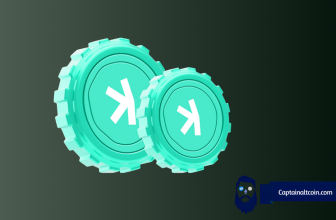
Thanks to Sanbase, a tool for crypto sleuths, we noticed another unknown coin dominating the grapevines of crypto groups across social media.
It is the coins with ticker ARPA – token issued by the eponymous company on the ArpaChain.
What is Arpa?
Arpa touts itself as the first-ever privacy-computation network and the world’s first China-South Korea joint initial exchange offering (IEO) project is building a secure computation network that’s compatible with blockchain. (It’s compatible with existing chains such as Ethereum and EOS.)
The company and the project were founded in April 2018, and has backing from over a dozen institutional investors, including TechCrunch’s founder’s Arrington XRP, GBIC, Genesis Capital and Metropolis VC. Currently, ARPA token is being traded on Gate.io, Huobi, KuCoin, and soon on Binance DEX.
ARPA’s platform gives developers secure analysis and utilization, but also protects data from getting exposed to third parties.
ARPA Chain (ARPA) price is $0.01849773 with a 24-hour trading volume of $2,567,754. Price is up 2.5% in the last 24 hours. It has a max supply of 1.4 Billion coins. The most active exchange that is trading ARPA Chain is Gate.io.
Arpa offers solution for fake volume on exchanges?
One of the core problems with cryptocurrency exchanges is transparency.
Add in the notion that the vast majority of cryptocurrency exchange actively engage in wash trading and report fake volumes, and transparency clearly is a cardinal issue in the exchange ecosystem.
Transparency primarily involves two areas: proof of solvency and proof of legitimate trading volumes. Proof of solvency is critical because investors need to know the risk of engaging with a financial entity that holds their funds. However, the issue that exchanges take with this is that they do not want to publicly disclose the financial details of their internal operations.
Arpa relies on a fascinating subfield of cryptography called secure multi-party computation, which applied to exchanges, would enable them to jointly compute the average solvency of their exchanges without actually exposing the full solvency data to competitors.
Proof of solvency presents a= problem of its own for exchanges. For example, an exchange may not want to publicly report revenue or other fiscal details due to fear of competition taking advantage of their transparency – a reasonable concern on their part.
ArpaChain relies on a cryptographic technique called ‘secure multi-party computation,’ which allows multiple participants to compute a function without revealing their independent inputs.
In the context of exchanges, that could mean exchanges joining forces to self-regulate, and to expose that they are solvent beyond a precise threshold without revealing the exact financial details of each exchange.







